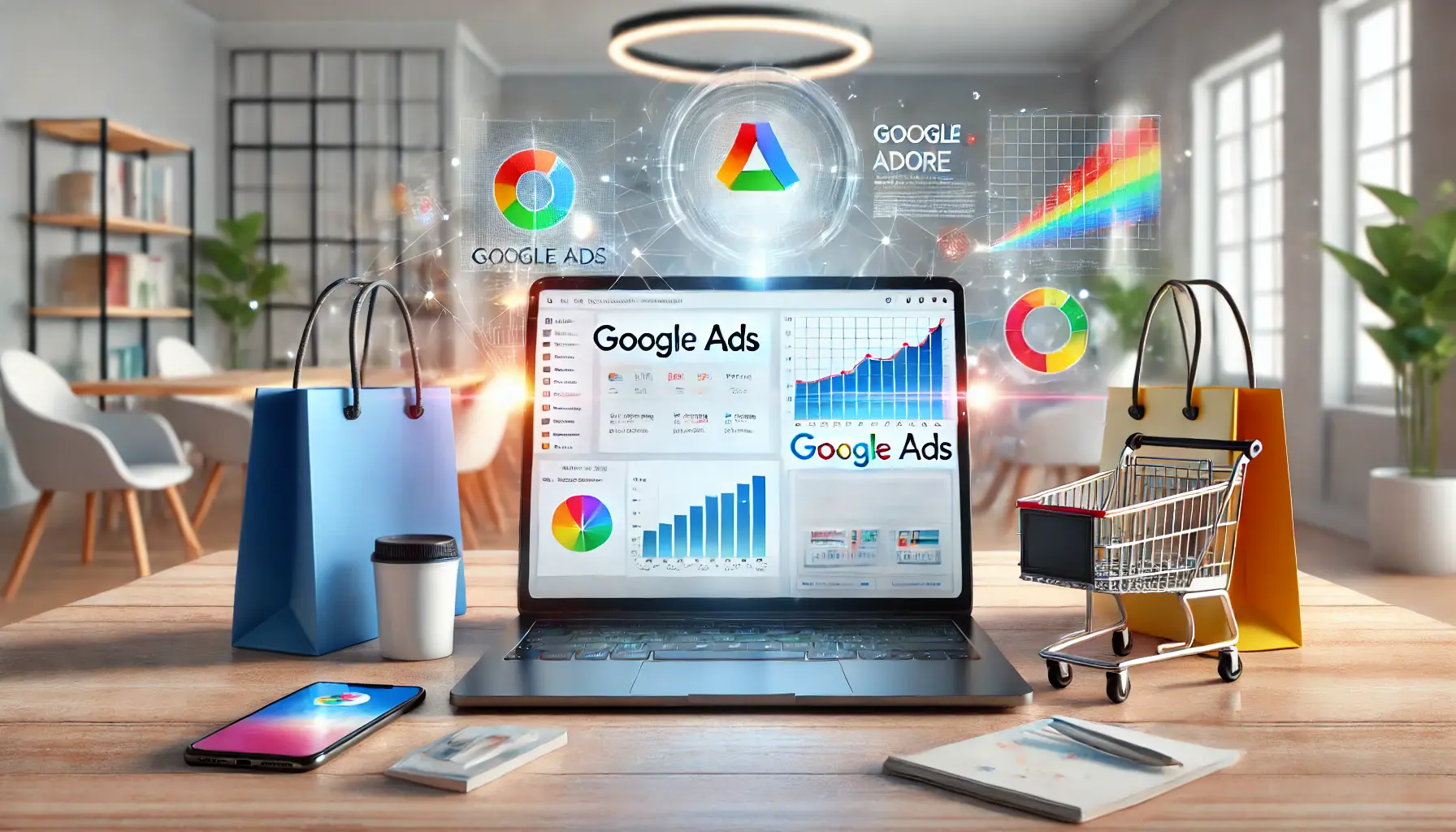In the world of digital marketing, staying ahead is indeed critical, especially where ad space competition is concerned.
Thousands of businesses are competing in their quest to be seen.
Being able to understand how ad space competition works and learn from it is key for many.
For local advertisers, the stakes are that much higher because they also need to tailor their ad space competition strategies to meet particular sets of demands from target audiences.
This article will guide you through effective tactics to dominate local ad space competition and make your campaigns stand out.
- Understand Local Ad Space Competition Dynamics
- Optimize Google Ads for Local Search
- Leverage Data-Driven Strategies for Local Ads
- Increase Engagement with Locally Relevant Content
- Monitor and Adjust for Sustained Success
- Mastering Ad Space Competition for Local Success
- Frequently Asked Questions About Ad Space Competition
Understand Local Ad Space Competition Dynamics
To excel in local ad space competition, you need to start by gaining a comprehensive understanding of your local market.
Each region has its own advertising ecosystem, and uncovering the dynamics of your local ad space competition can give you a significant advantage.

Illustration of analyzing local competitor advertising strategies with a focus on data and analytics.
Research the Advertising Strategies of Your Local Competitors
Identify your main competitors first.
Meticulously look at the ad types they are running, where they are running them, and what kind of messaging they’re using.
This will help you identify gaps in their strategy and opportunities for your own campaigns.
- Identify key competitors using tools like Google search and ad intelligence platforms.
- Analyze their ad copy, visuals, and call-to-actions to understand their positioning.
- Look for missed opportunities, such as targeting specific local events or demographics.

Visualization of tools used for analyzing regional keyword performance to optimize local ad campaigns.
Analyze Keyword Performance in Your Region
Local search behavior differs from one area to another, and optimizing for location-specific keywords can make a huge difference.
Use tools like Google Keyword PlannerA free tool by Google that helps advertisers find and analyze keywords for their campaigns. to identify high-performing keywords in your area.
- Search for keywords with high local search volume and low competition.
- Incorporate location modifiers like city names or neighborhoods.
- Regularly monitor keyword performance and adjust your campaigns accordingly.

Illustration of strategies to understand and address unique customer needs in a specific locality.
Identify Unique Customer Needs in Your Locality
Every community has its own preferences and priorities.
By tailoring your ads to these unique needs, you can establish a deeper connection with your audience.
- Survey or engage your audience to understand their pain points.
- Create ad content that speaks directly to these needs.
- Highlight how your products or services address specific local concerns.

Visualization of adapting local ad campaigns to seasonal trends for enhanced performance.
Adapt to Seasonal Trends Affecting Local Ads
Seasonality can make all the difference in local advertising success.
Understanding and leveraging these trends can set your campaigns apart from competitors.
- Use historic data to identify seasonal peaks for your industry.
- Develop campaigns that speak to local events or holidays.
- Plan your ad budget in order to capture the high returns in peak demand.
By deep-diving into the dynamics of local ad space competition, you lay a great foundation for success.
Not only will you be able to devise better campaigns, but you are also sure that your endeavors will reach your audience well and work in a crowded ad landscape.
Understanding the local advertising ecosystem helps identify unique opportunities to outperform competitors in your region.

Illustration of strategies to optimize Google Ads for improved local search performance.
Optimize Google Ads for Local Search
To effectively compete in ad space competition, optimizing your Google Ads campaigns for local search is a crucial step.
Local search allows you to directly reach out to nearby audiences who are searching for products or services you offer.
When done right, it can significantly improve your visibility and return on investment (ROI).

Illustration of the importance of integrating location-specific keywords in ad campaigns for targeted results.
Use Location-Specific Keywords in Your Campaigns
Integrating location-specific keywords is one of the most effective ways to target a local audience.
These keywords ensure your ads appear to users searching for businesses in your area.
- Include city, neighborhood, or regional names in your ad copy and keywords.
- Focus on long-tail keywords like “best pizza in [city]” to capture intent-driven searches.
- Regularly review keyword performance and adjust bids for high-performing ones.

Illustration of optimizing Google My Business profiles to boost local visibility for businesses.
Leverage Google My Business for Local Visibility
Google My Business (GMB) is a powerful tool to enhance your presence in local search.
By maintaining an optimized GMB profile, you ensure potential customers see accurate and engaging information about your business.
- Ensure your business name, address, and phone number (NAP) are consistent across platforms.
- Add high-quality photos, operating hours, and a compelling business description.
- Encourage customers to leave positive reviews to improve your local ranking.

Illustration of setting up geo-targeting in Google Ads for precise ad targeting and campaign optimization.
Set Up Geo-Targeting in Google Ads Effectively
Geo-targeting enables you to show your ads only to users within specific locations.
This not only increases relevance but also helps optimize your ad spend.
- Define your target area by setting up precise location boundaries in Google Ads.
- Use radius targeting to focus on audiences near your business.
- Exclude locations where your services are not available to save costs.
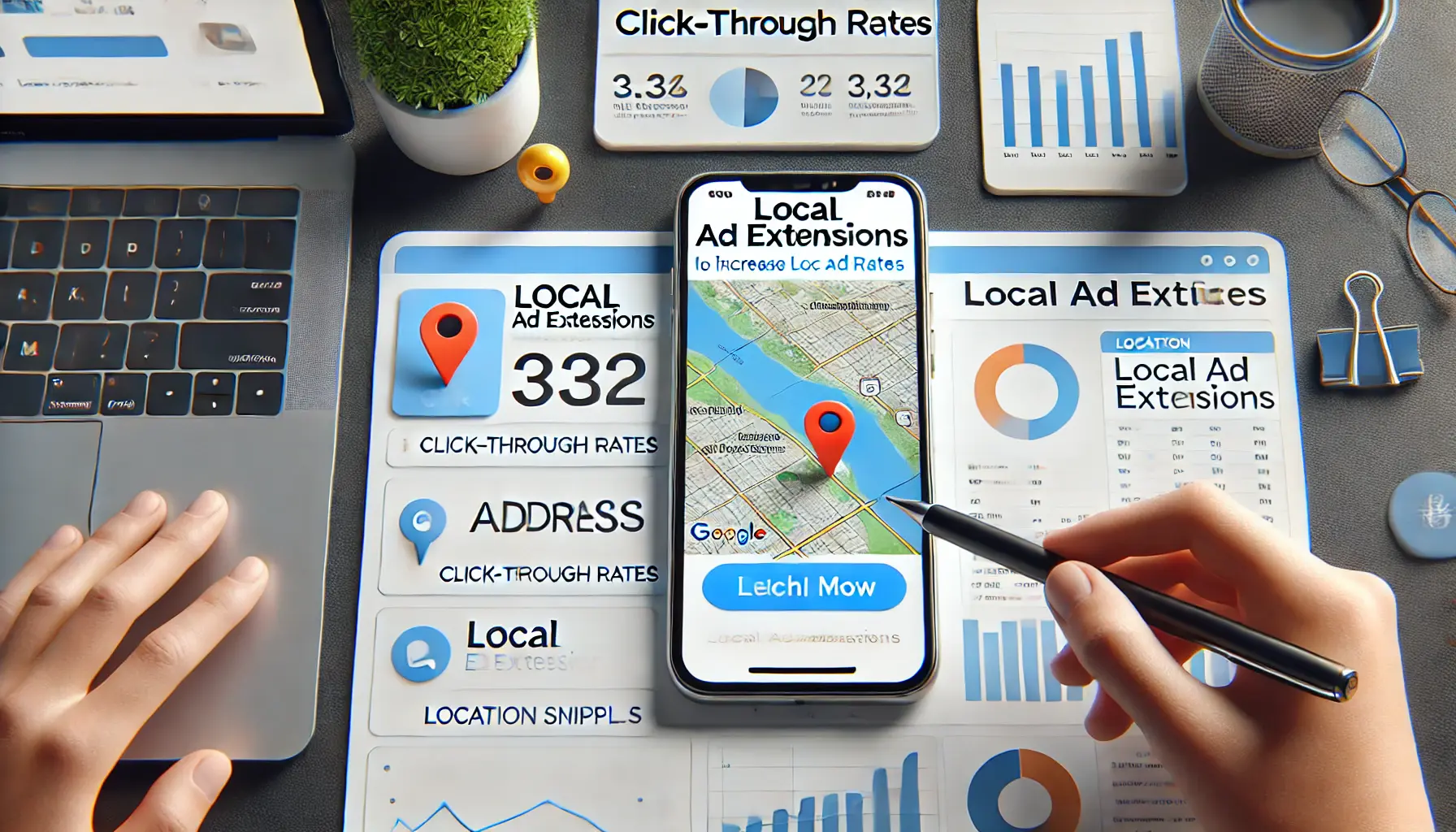
Visualization of using local extensions in ads to enhance click-through rates and engagement.
Use Local Extensions to Increase CTR
Ad extensions give extra information and make your ad more attractive.
Using local extensions will directly increase your click-through rate (CTR).
- Add location extensions to show your address, directions, or distance from the user.
- Use call extensions so that users can call you directly from the ad.
- Experiment with structured snippet extensions to highlight local offerings.
Optimizing your Google Ads for local search supports you in gaining a competitive advantage in ad space competition; at the same time, it ensures that your ad campaigns reach the right set of audiences.
You’ll be able to greatly enhance your local advertising by weaving together location-specific keywords, geo-targetingA marketing strategy that delivers ads to users based on their geographic location., and captivating ad extensions.
Using location-specific keywords, geo-targeting, and local extensions ensures your Google Ads campaigns effectively reach local audiences.

Visualization of leveraging data and analytics for optimizing local ad strategies.
Leverage Data-Driven Strategies for Local Ads
In the fiercely competitive world of ad space competition, relying on instincts alone won’t cut it.
Data-driven strategies are your secret weapon to make smarter decisions, optimize campaigns, and stay ahead of competitors.
By analyzing data effectively, you can fine-tune your local ad campaigns for better results and improved ROI.

Illustration of analyzing local audience demographics for more targeted ad strategies.
Analyze Local Audience Demographics
Understanding the preferences, behavior, and spending of your local audience is the first step to running effective ads.
Demographic insights reveal much about your potential customers, including their behaviors and consumption habits.
Tools such as Google Analytics and Facebook Audience Insights provide detailed information on age, gender, and interests for better targeting.
- Segment your target audience by income level, occupation, or lifestyle.
- Tailor your ad messaging to align with these demographic insights for a personal touch.
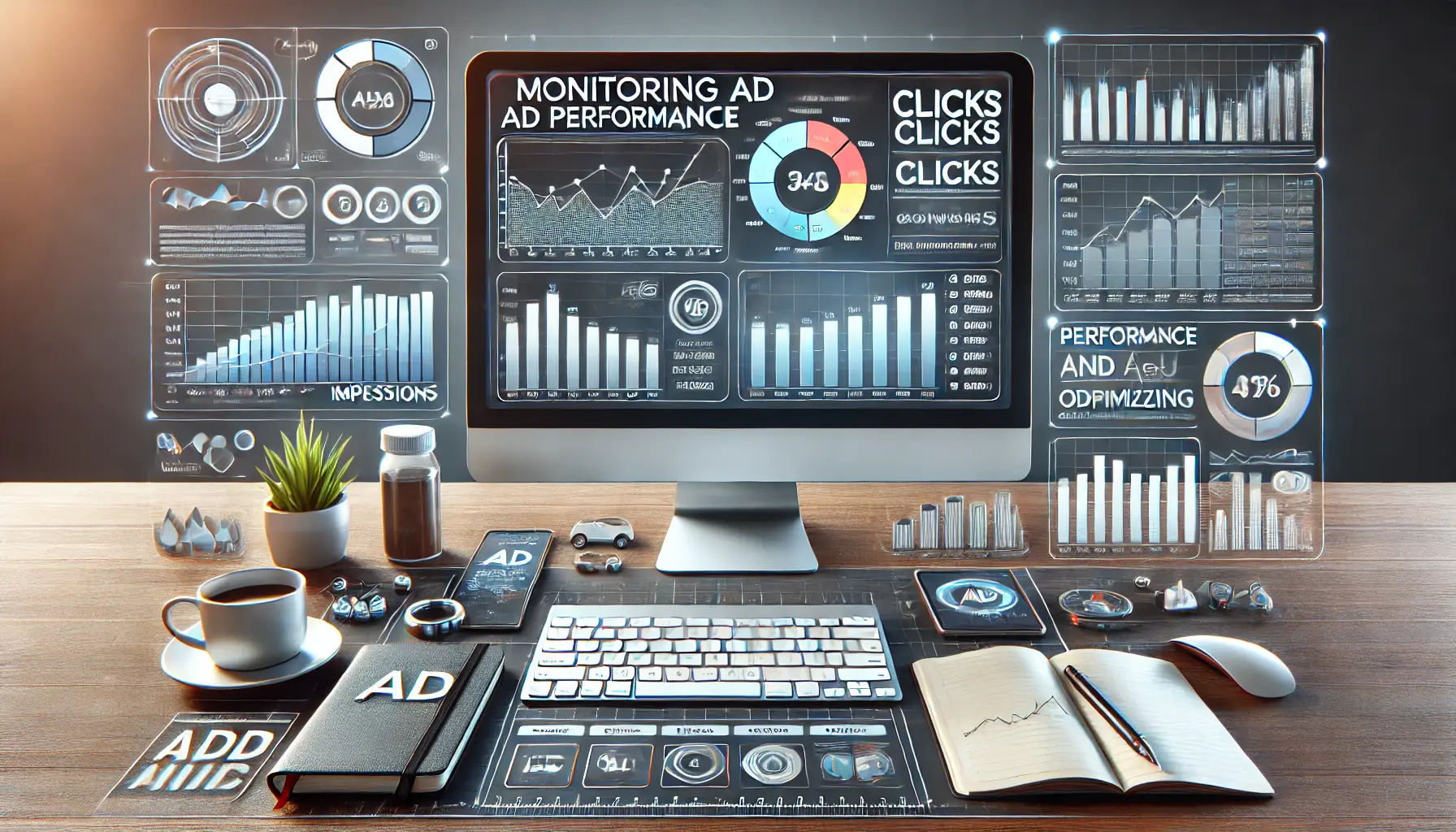
undefined
Monitor Ad Performance with Analytics Tools
Regularly tracking the performance of your campaigns is crucial to understanding what’s working and what’s not.
Data from analytics tools can help you pinpoint areas for improvement.
- Use Google Ads reports to track impressions, clicks, and conversions.
- Set up conversion tracking to measure specific actions like purchases or sign-ups.
- Review bounce rates and engagement metrics to refine ad creatives.

Visualization of A/B testing for local ad creatives to optimize performance and engagement.
Experiment with A/B Testing for Local Ad Creatives
Testing different versions of your ads allows you to identify the most effective elements.
A/B testing helps you optimize your campaigns without guesswork.
- Experiment with variations in headlines, images, or CTAs.
- Test offers or promotions to see which works best with your audience.
- Analyze test results to implement winning combinations in your campaigns.

Visualization of adjusting bids in digital advertising based on time and location performance.
Adjust Bids Based on Time and Location Performance
Not all times or locations perform equally, and by analyzing data, you can allocate your ad spend more effectively to maximize returns.
- Use time-of-day data to increase bids during peak activity hours.
- Analyze location performance to focus on high-conversion areas.
- Decrease bids in low-performing locations to save costs.

Visualization of using heat maps to refine targeting strategies in digital marketing.
Utilize Heat Maps to Refine Targeting Strategies
Heat maps provide visual insights into where your audience engages the most.
They help refine targeting strategies for improved precision.
- Analyze user engagement on landing pages to identify key focus areas.
- Leverage click maps to optimize your ad placements and CTAs.
- Use geo-heat maps to target high-engagement and high-conversion regions.
By leveraging data-driven strategies, you transform raw information into actionable insights and thereby gain a significant competitive edge in ad space competition.
The combination of audience analysis, performance monitoring, A/B testing, and heat map insights makes your local ad campaigns efficient, effective, and impactful.
Data-driven strategies like A/B testing and heat map analysis help refine your targeting and maximize ROI.

Visualization of increasing engagement by using locally relevant content in ad campaigns.
Increase Engagement with Locally Relevant Content
In the fight for ad space competition, content that resonates with your local audience is a game-changer.
By crafting ads that are locally relevant, you’ll be able to better connect with your audience, increase engagement, and drive more conversions.
Tailoring your content to reflect the culture, events, and needs of your community helps your ads stand out in an ad-saturated marketplace.

Visualization of creating ads that highlight local events and culture to enhance campaign relevance.
Create Ads Emphasizing Events or Culture at a Local Level
Utilize local events and cultural themes in your marketing campaigns to create relevance and familiarity within your target audience.
- Advertise events such as fairs, festivals, or seasonal activities relevant to your products or services.
- Incorporate local icons, traditions, or colloquialisms in your ad creative.
- Run timely campaigns in conjunction with locally relevant holidays or celebrations.

Illustration of collaborating with local businesses for co-promotions and mutual marketing efforts.
Partner with Local Businesses for Co-Promotions
Collaborate with other local businesses to expand your reach and build a sense of community support.
Co-promotions can be mutually beneficial to all parties involved.
- Cross-promote products or services with complementary businesses.
- Host joint events or giveaways that draw in shared audiences.
- Feature each other’s offerings in your ad campaigns to build credibility.

undefined
Use Testimonials from Local Customers
Nothing builds trust and credibility like real feedback from local customers.
Featuring testimonials in your ads can enhance your brand’s reliability and relatability.
- Request testimonials from satisfied local customers.
- Highlight specific benefits or results customers experienced with your product or service.
- Include photos or videos of local customers to add a personal touch.

Visualization of integrating local storytelling into ad campaigns to enhance community engagement.
Focus on Local Storytelling in Ad Campaigns
Storytelling helps humanize your brand and build an emotional connection with your audience.
Sharing relatable local stories makes your ads more memorable and impactful.
- Share behind-the-scenes stories about your business and its connection to the community.
- Feature local heroes or influencers who align with your brand values.
- Create content that speaks to shared experiences or challenges faced by the community.

Visualization of promoting locally relevant offers and discounts to enhance customer engagement.
Emphasize Locally Relevant Offers and Discounts
Special offers or discounts specifically tailored to your local audience have the power to drive attention and conversions.
- Offer location-based discounts for in-store visits.
- Develop loyalty programs specifically for local customers.
- Promote exclusive deals around local events or seasons.
Emphasizing locally relevant content has a significant effect on driving your engagement levels in ad space competition.
Local storytelling combined with testimonials and targeted offers ensures your ads will strike a chord with your audience, building trust and loyalty.
Creating locally resonant content builds stronger connections with your audience and sets your brand apart in competitive ad spaces.

Visualization of monitoring and adjusting strategies to ensure sustained success in digital campaigns.
Monitor and Adjust for Sustained Success
Long-term success in ad space competition requires constant vigilance and flexibility.
Monitoring your campaigns and adjusting to performance data ensures your ads stay relevant, effective, and aligned with your business goals.
This approach keeps you one step ahead of the competition and guarantees the highest possible ROI.
Illustration of tracking competitor changes in real-time to stay ahead in the market.
Real-Time Tracking of Competitor Changes
Understanding what your competitors are doing can provide valuable insights and help you stay competitive.
Monitoring their strategies allows you to anticipate shifts in the market and adapt accordingly.
- Use tools like SEMrush or SpyFu to analyze competitor ad strategies and keywords.
- Keep an eye on their promotional trends and seasonal campaigns.
- Identify gaps or missed opportunities in their ads to position your campaigns effectively.
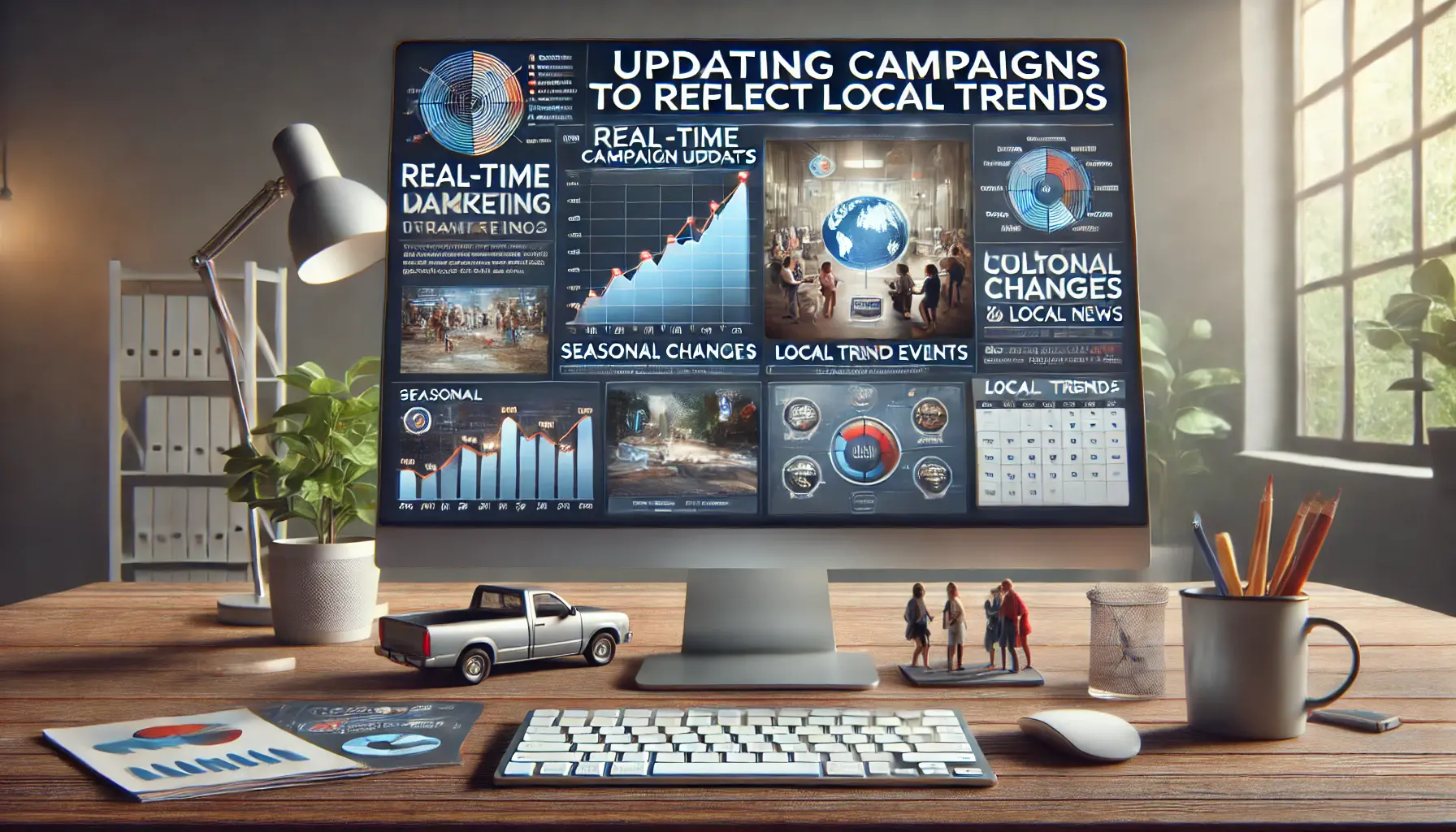
Visualization of updating digital marketing campaigns to align with local trends and seasonal changes.
Update Campaigns to Reflect Local Trends
Local trends can significantly impact ad performance.
Maintaining relevance within campaigns based on trends in each location ensures your ads resonate with the target audience.
- Use Google Trends to determine local search interests and seasonal upticks.
- Incorporate trending topics or issues into your ad creatives and messaging.
- Update offers and promotions to match current local demand.

undefined
Assess ROI and Reallocate Budgets
Measuring the return on investment for each campaign enables you to distribute your ad spend effectively.
Focus on channels and strategies that offer the best outcomes.
- Calculate the ROI of every campaign using metrics like CPC and conversion rates.
- Reallocate budgets from underperforming ads to high-performing ones.
- Invest more in platforms or channels that yield the highest returns.
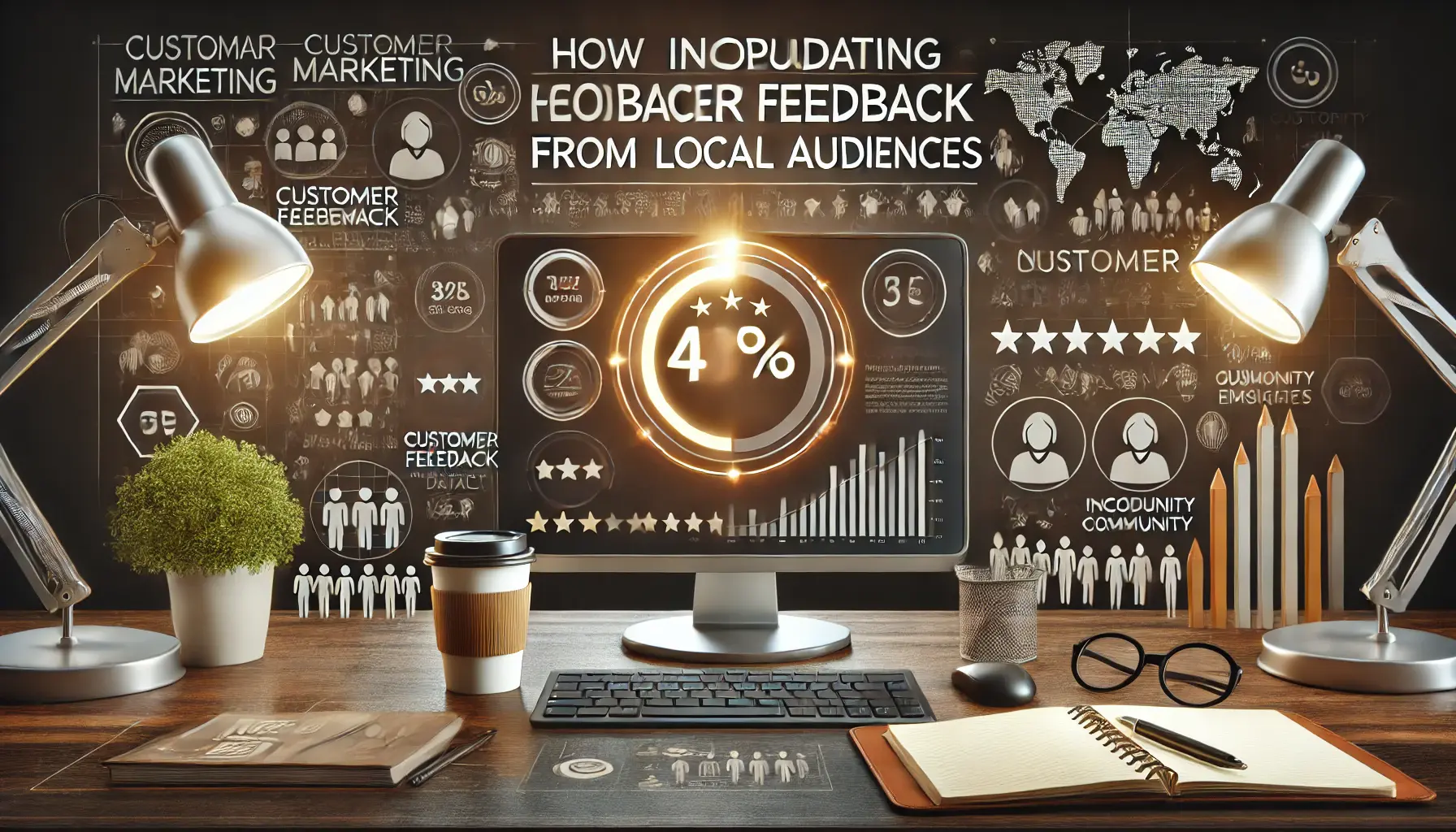
Visualization of incorporating feedback from local audiences to refine marketing strategies.
Incorporate Feedback from Local Audiences
Listening to your audience is a powerful way to refine your campaigns and build stronger connections.
Feedback provides valuable insights into what works and what needs improvement.
- Encourage reviews and feedback through social media or surveys.
- Analyze customer feedback to address pain points and improve your offerings.
- Use positive testimonials in your ads to enhance credibility.
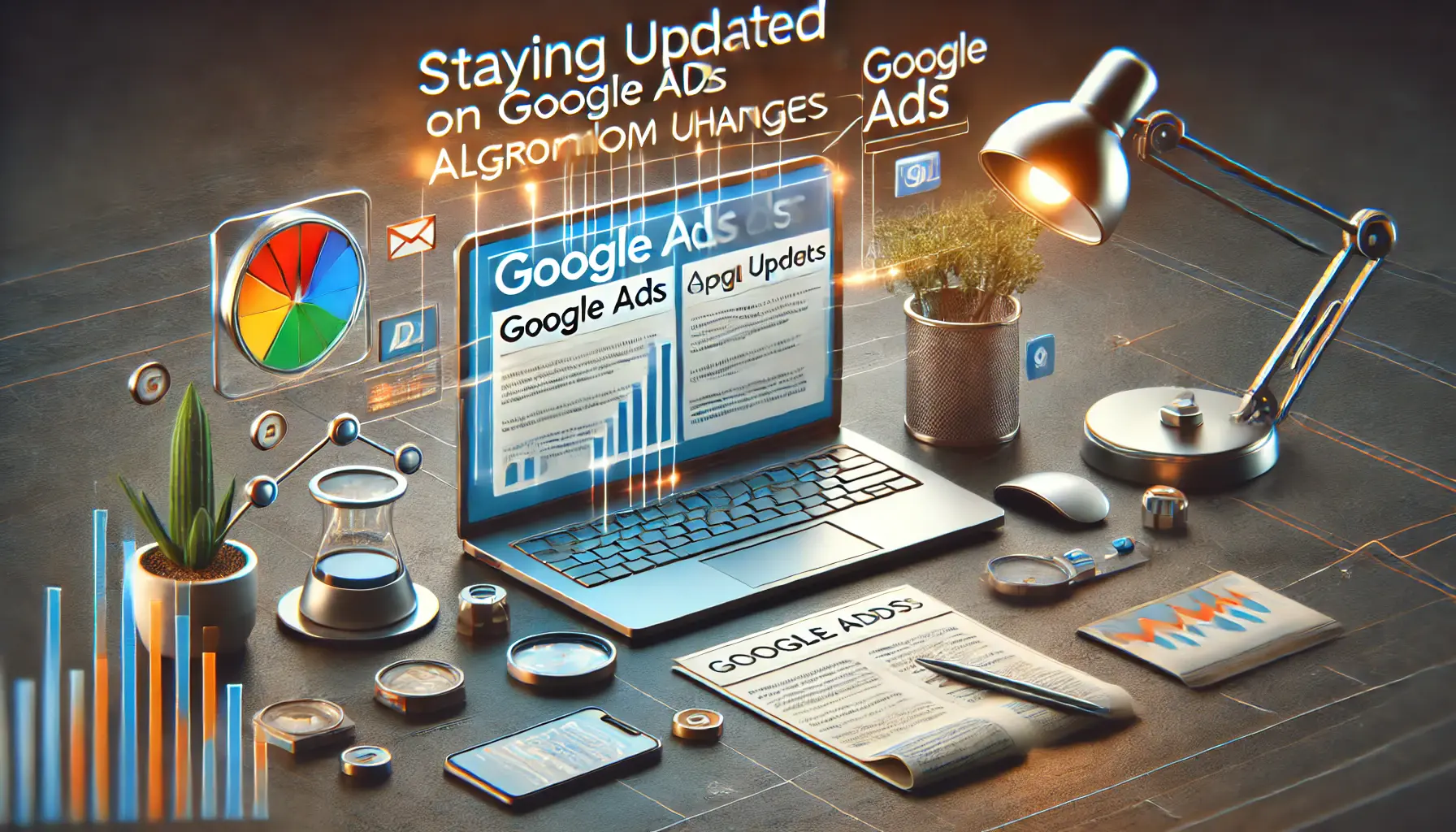
Visualization of staying updated on Google Ads algorithm updates to optimize digital marketing strategies.
Stay Updated on Google Ads Algorithm Updates
Google Ads algorithms are constantly evolving, and staying informed is crucial for maintaining ad performance.
Adapting to these changes ensures your campaigns remain optimized.
- Follow official Google Ads updates and blogs for the latest algorithm changes.
- Test new ad formats or features as they are introduced.
- Regularly review campaign performance and make adjustments based on new guidelines.
By consistently monitoring and adjusting your campaigns, you can achieve sustained success in ad space competition.
Whether it’s tracking competitors, leveraging local trends, or incorporating audience feedback, these strategies ensure your ads remain effective, impactful, and relevant over time.
Regularly updating campaigns based on performance data and feedback ensures long-term success in local ad space competition.

Visualization of mastering ad space competition for local success with strategic advertising insights.
Mastering Ad Space Competition for Local Success
Ad space competition is a challenging yet rewarding landscape for businesses seeking to maximize their reach and impact.
By adopting thoughtful strategies tailored to local markets, advertisers can effectively navigate this competitive terrain and achieve sustained success.
Let’s encapsulate the key takeaways from this article to provide a roadmap for dominating local ad spaces.

Visualization of understanding the local ad environment through market research and competitor analysis.
1. Understand Your Local Ad Environment
The foundation of success in ad space competition lies in understanding the local market dynamics.
Researching competitors, analyzing keyword performance, and identifying unique customer needs are essential steps.
By tailoring campaigns to seasonal trends and local events, you create a stronger connection with your audience.
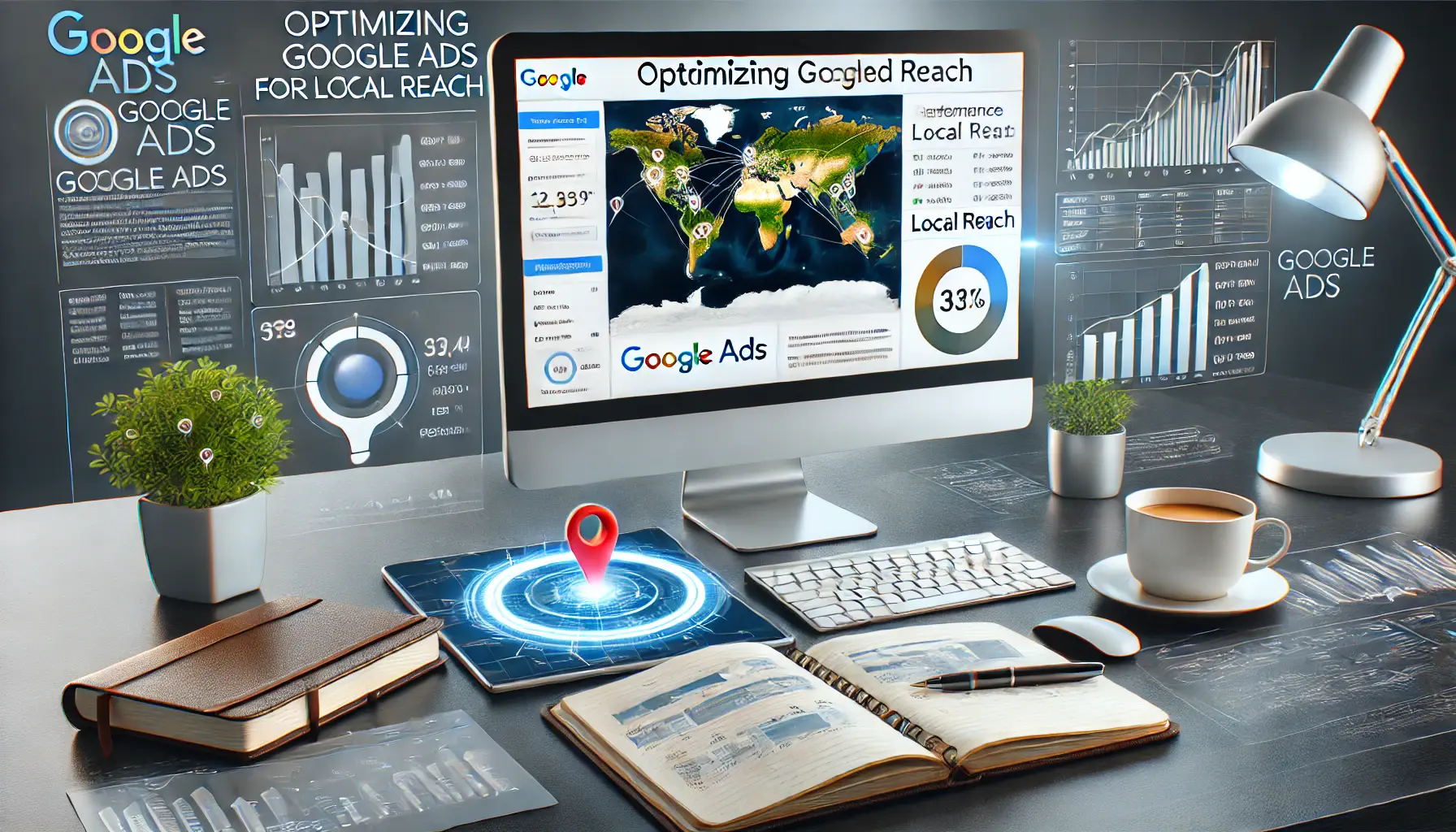
undefined
2. Optimize Google Ads for Local Reach
Effectively using Google Ads is essential for capturing local audiences.
Integrating location-specific keywords, leveraging Google My Business, and employing geo-targeting ensure your ads reach the right people at the right time.
Adding local extensions enhances both visibility and click-through rates.

Visualization of leveraging data-driven insights to optimize digital marketing strategies.
3. Leverage Data-Driven Insights
Data is a powerful tool in ad space competition.
By analyzing audience demographics, monitoring ad performance, and conducting A/B testing, you can refine your campaigns for better results.
Adjusting bids based on time and location performance ensures your budget is allocated efficiently, while heat mapsVisual tools that show user engagement, such as clicks or interactions, on a webpage or ad. help optimize targeting strategies.

Visualization of engaging an audience through the use of local content in marketing campaigns.
4. Engage Your Audience with Local Content
Creating ads that resonate with local audiences is a game-changer.
Highlighting local events, collaborating with nearby businesses, and using customer testimonials build trust and engagement.
Storytelling and locally relevant offers make your campaigns more memorable and impactful.

Visualization of continuously monitoring and adjusting digital marketing campaigns for optimal performance.
5. Continuously Monitor and Adjust Campaigns
Sustained success in ad space competition requires regular monitoring and adjustments.
Monitoring competitors, staying updated on local trends, and reallocating budgets according to ROI are key practices.
Listening to audience feedback and staying updated about algorithm changes ensure your ads remain relevant and effective.
In conclusion, conquering ad space competition requires a strategic approach, continuous innovation, and a deep understanding of local markets.
These strategies help businesses stand out and build long-lasting connections with their audiences, achieving both immediate and long-term success in the ever-competitive advertising landscape.
Failing to adapt to local market dynamics can result in wasted ad spend and missed opportunities to connect with target audiences.
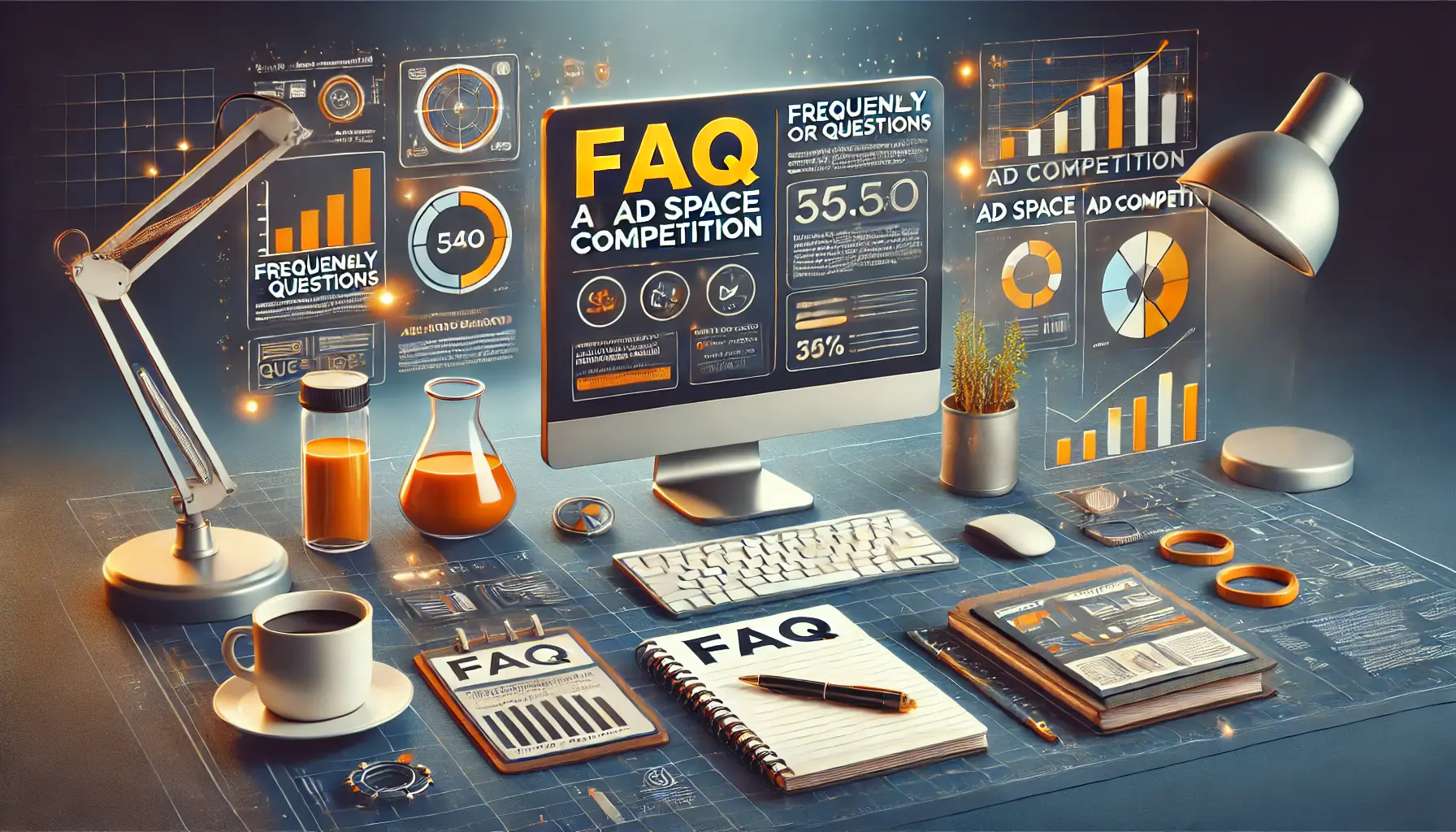
Illustration of analyzing frequently asked questions related to ad space competition in digital marketing.
Your campaigns can be managed by an agency specialized in Google Ads, check out our service page.
Frequently Asked Questions About Ad Space Competition
Here are some common questions and concise answers to help you better understand ad space competition and optimize your strategies for success.
Ad space competition refers to the competition among businesses for visibility in digital advertising spaces to capture audience attention.
It involves strategies to outperform rivals and attract potential customers effectively.
Local targeting ensures your ads resonate with nearby audiences, addressing their specific needs and preferences.
This increases relevance, engagement, and conversions while optimizing your ad budget for a focused audience.
Analyze audience demographics, track ad performance, and conduct A/B testing.
Adjust bids based on time and location, and utilize heat maps to refine targeting for better results and higher ROI.
Tools like SEMrush, SpyFu, and Google Ads reports can help analyze competitors’ ad strategies, keywords, and trends.
These insights allow you to identify gaps and refine your campaigns for better positioning.
Regular updates are crucial, especially when responding to changes in local trends, competitor strategies, or performance data.
Weekly or bi-weekly reviews ensure your ads stay relevant and effective.
Storytelling creates emotional connections with your audience, making your brand relatable and memorable.
Sharing local stories enhances engagement and helps your ads stand out in a crowded marketplace.
Google Ads algorithms determine how ads are displayed and ranked.
Staying informed about updates helps you optimize campaigns, ensuring better visibility, engagement, and ROI in a competitive landscape.


